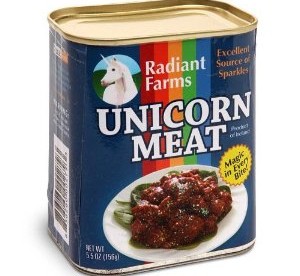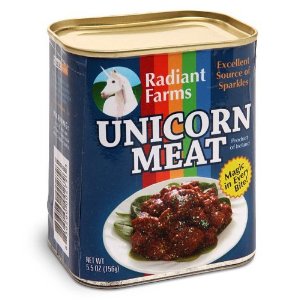The Weekender: September 30, 2016

1) “Is the Oculus Rift Sexist?” (QZ, 8 minutes, March 24, 2014). The headline sucks. The article doesn’t. (And for those who don’t know, the Oculus Rift is a virtual reality device, and the company which created it is now owned by Facebook.)
In my experiment, I tried to trick people’s brains. I created scenarios in which motion parallax suggested an object was at one distance, and shape-from-shading suggested it was further away or closer. The idea was to see which of these conflicting depth cues the brain would prioritize. (The brain prioritizes between conflicting cues all the time; for example, if you hold out your finger and stare at it through one eye and then the other, it will appear to be in different positions, but if you look at it through both eyes, it will be on the side of your “dominant” eye.)
What I found was startling (pdf). Although there was variability across the board, biological men were significantly more likely to prioritize motion parallax. Biological women relied more heavily on shape-from-shading. In other words, men are more likely to use the cues that 3D virtual reality systems relied on.
This, if broadly true, would explain why I, being a woman, vomited in the CAVE: My brain simply wasn’t picking up on signals the system was trying to send me about where objects were, and this made me disoriented.
2) My other site: AwesomeClaus — curated gift ideas for $20 or less. Stuff like a Mario-themed pipe mug, a desktop punching bag, an emergency clown nose, sriracha popcorn, and pictured below, unicorn meat. Highly recommended, which I can say with confidence because it’s my website.
3) “What the Cleaner Saw: Secrets of the Upper Crust” (The Guardian, 15 minutes, September 2016). This doesn’t pay off on its headline — it’s not very scandalous (that’s good) but it also doesn’t really reveal that many secrets (oh well). But it’s a nice look at the life of someone who has a job that we often don’t get to see a first-hand look at.
4) “How a $2 Roadside Drug Test Sends Innocent People to Jail” (New York Times, 27 minutes, July 2016). The subhead: “Widespread evidence shows that these tests routinely produce false positives. Why are police departments and prosecutors across the country still using them?”
Police officers arrest more than 1.2 million people a year in the United States on charges of illegal drug possession. Field tests like the one Officer Helms used in front of [suspect] Amy Albritton help them move quickly from suspicion to conviction. But the kits — which cost about $2 each and have changed little since 1973 — are far from reliable.
The field tests seem simple, but a lot can go wrong. Some tests, including the one the Houston police officers used to analyze the crumb on the floor of Albritton’s car, use a single tube of a chemical called cobalt thiocyanate, which turns blue when it is exposed to cocaine. But cobalt thiocyanate also turns blue when it is exposed to more than 80 other compounds, including methadone, certain acne medications and several common household cleaners. Other tests use three tubes, which the officer can break in a specific order to rule out everything but the drug in question — but if the officer breaks the tubes in the wrong order, that, too, can invalidate the results. The environment can also present problems. Cold weather slows the color development; heat speeds it up, or sometimes prevents a color reaction from taking place at all. Poor lighting on the street — flashing police lights, sun glare, street lamps — often prevents officers from making the fine distinctions that could make the difference between an arrest and a release.
5) “The Ballad of Balloon Boy” (Slate, 8 minutes, yesterday). This delves briefly into the 2016 election, which I am trying to stay away from, but I had totally forgotten about Balloon Boy. So, I wanted to share this. I think the article is a bit aggressive and wide-sweeping in its conclusions, but again, I had totally forgotten about Balloon Boy.
6) “The People’s Cheeseburger” (Eater, 22 minutes, September 2016). I don’t eat cheeseburgers, but I really do like stories about them.
Here’s the story you may have heard about [burger joint] Locol: In 2013, [celeb chef] Roy Choi spoke at the MAD Symposium in Copenhagen, the TED Talks of the food world, and called on his fellow chefs to think beyond feeding the rich. He stood in front of the audience of culinary luminaries, including Patterson, and asked them a question: “What if every high-caliber chef, all of us in here, told our investors as we were building restaurants, that we leveraged it [so that] for every restaurant we would build… it would be a requirement to build a restaurant in the hood, too?” Three months later, [Bay Area chef Daniel] Patterson called up Choi, and, long story short, the duo were back in Copenhagen the next year, an odd-couple pairing of the lanky, studious fine-dining chef and the hip-hop- and weed-loving food truck king. Together, they unveiled their plans to launch Locol, and a revolution.
With its burgers and fried chicken sandwiches, Locol is recognizably a fast-food restaurant, despite the absence of counter-service standards like soda and French fries. But the greasy paper wrapper of the Locol “cheeseburg” is deceptive. The patty is not all beef, as other chains may proudly advertise: Thirty percent of it is composed of cooked grains and tofu. It’s served on a whole-grain bun leavened with koji, the fermentation culture used to make sake, soy sauce, and miso, which is designed to reproduce the soft texture of white bread without sacrificing nutritional density. The dishes served are punctuated with various Korean and Mexican touches, like breakfast sandwiches loaded with carnitas, or a noodle bowl flavored with ginger and lime.
The menu — and the mission — of Locol didn’t come out of nowhere. Patterson had started the Cooking Project, which teaches kids in poor Bay Area neighborhoods culinary skills, in 2013, a few months before hearing Choi’s impassioned speech at MAD. And Choi, whose Kogi trucks have fed a broader demographic and geographic swath of Los Angeles than practically any other restaurant brand in the city, had spent years laying the groundwork for his latest turn as a messianic populist. His Kogi trucks “built the muscle” for the work of launching Locol, Choi told me. “Because I was feeding people everywhere. It didn’t matter — there was no discrimination. We would just post up and feed everyone for two dollars.”
Have a great weekend!

